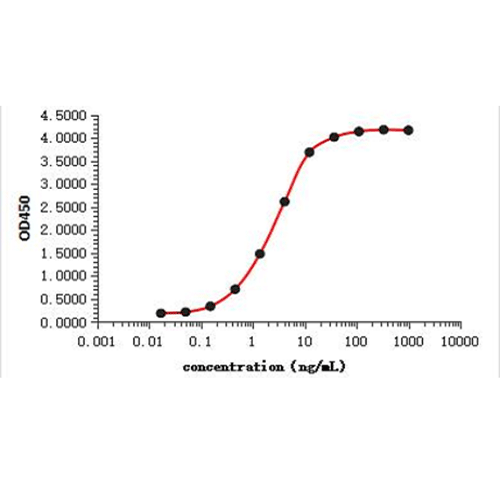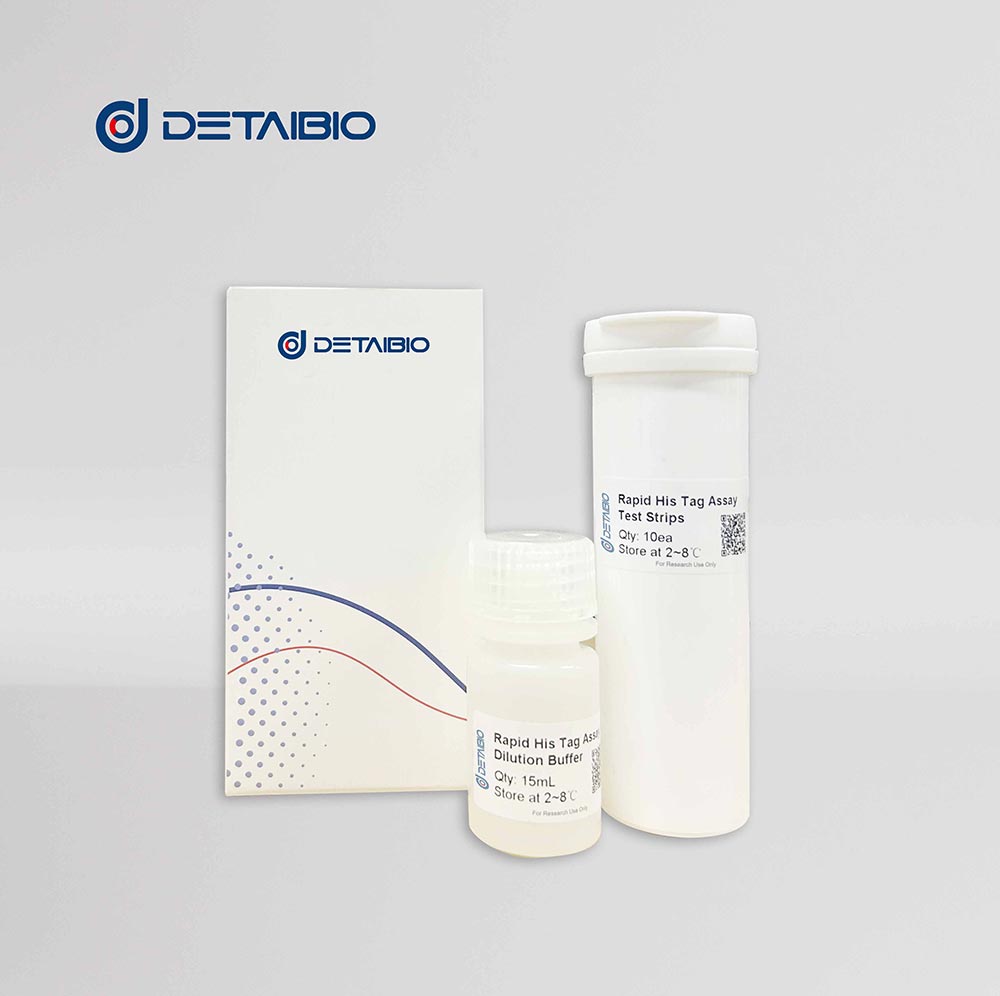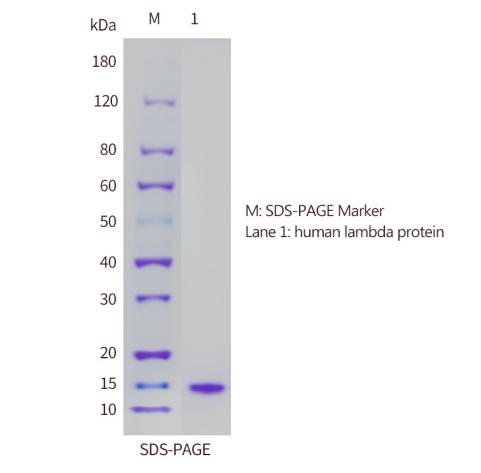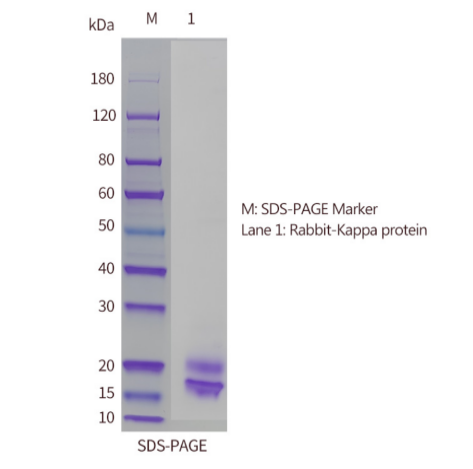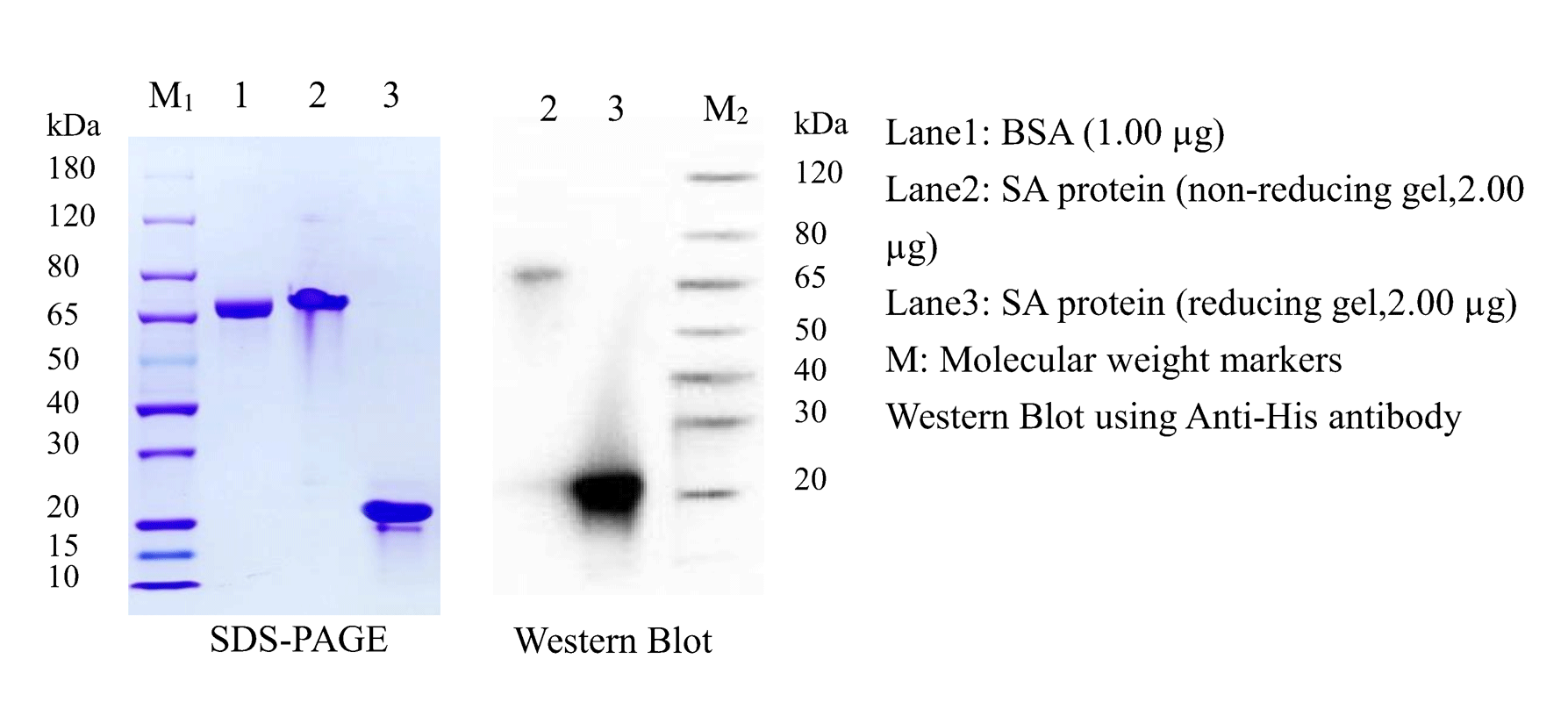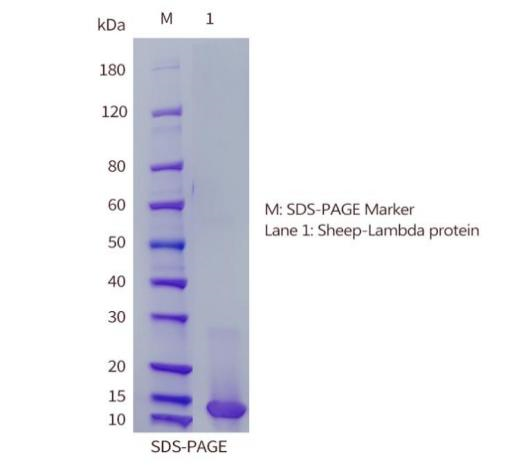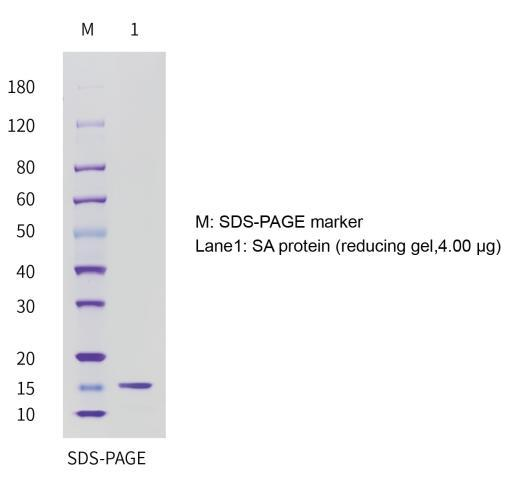Tag antibodies are widely used in various fields such as protein expression and purification, signal transduction, and gene function research. They are commonly applied in experiments for recombinant protein purification, intracellular protein localization, and qualitative and quantitative analysis of protein expression levels.
Detabio offers highly specific antibodies for His, GST, and Flag tags. Our products exhibit excellent specificity, high dilution capability, and strong stability. Detabio has conducted extensive validation work to ensure that all products perform effectively in downstream applications (such as WB, IF, etc.).
Product Details
| Product Name | Anti-Eribulin Monoclonal Antibody |
| Type | Monoclonal |
| Purity | >90% as determined by SDS-PAGE |
| Conjugation | Non-conjugated |
| Host Species | Rabbit |
| Subtype | IgG |
| Purification Method | Protein G purified |
| Validated Application | ELISA |
| Buffer | 10mM PBS, pH 7.4 |
| Storage Instructions | Store in appropriate aliquots at -80 °C to avoid repeated freeze-thaw cycles |
| SDS-PAGE | 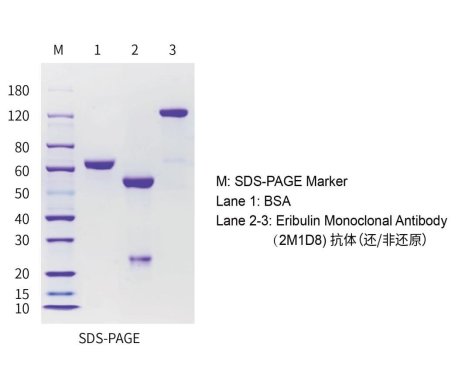 |
Product application
| Applications | ELISA |
| Recommended Dosage | 0.1 μg/mL - 1 μg/mL |
Bioactivity-ELISA
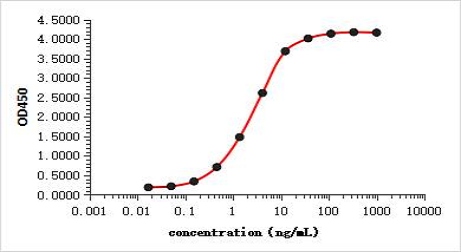
Pre coated with BSA Eribulin small molecule protein (2 μg/well) on ELISA plates, then added with continuously diluted anti Eribulin Monoclonal Antibody solution, washed, and incubated with secondary antibody for ELISA reading. Based on the above data, the EC50 for the binding of anti Eribulin Monoclonal Antibody to BSA Eribulin small molecule protein is 2.610 ng/mL.
Eribulin is a cell microtubule dynamics inhibitor and a soft sponge like anti-tumor drug. ADC loaded with Eribulin has a strong bystander effect and good clinical efficacy. Due to the release of payload after ADC administration, there is an increase in unbound payload and changes in ADC composition (i.e. DAR distribution). In order to address the challenges and difficulties in ADC drug PK analysis, a high-quality and high affinity anti Eribulin payload antibody can be used for ADC PK detection and DAR value analysis, which helps evaluate ADC efficacy, assess payload exposure at target sites, and is crucial for providing overall evaluation such as ADC stability.
Product Description
Detaibio Flag-tagged protein rapid detection kit uses lateral chromatography immunoassay technology to quickly and qualitatively detect cell culture supernatants, cell/bacterial lysates or purified Flag-tagged proteins. When testing, you only need to add the test strip to the sample as indicated by the arrow, or add a small amount of sample to the test strip and wait for 10 minutes to read the test results.
This product is for scientific research use only.
Product Advantages
- Speed: Results in 10 minutes
- Accuracy: Comparable to other antibody immunoassays
- Ease of Use: No dilution needed for supernatants and lysates, no additional equipment required
- Reproducibility: Consistent color and results across batches
Application Scenarios
- Verify Flag-tagged protein expression
- Optimize protein induction time during expression
- Check elution fractions during protein purification
Product Overview
| Product Name | Flag tag protein detection kit |
| Purpose | Qualitative detection of Flag-tagged proteins in various samples |
| Technology | Lateral flow immunoassay |
| Storage | 4-30°C, avoid direct sunlight, do not freeze |
| Validity | 12 months |
Product Contents (10 tests)
| Rapid Flag-tag Protein Test Strips | 10 tests |
| Sample Dilution Buffer | 10 mL |
Instructions for Use
1. Sample Requirements
①Applicable for cell culture supernatant, cell/bacterial lysates, or purified protein products. If cloudy, centrifuge and use the supernatant.
②No dilution needed for supernatants or lysates; purified samples can be diluted if needed.
③Samples must be at room temperature before testing.
2. Test Method
①Allow the test strip to reach room temperature.
②Insert the strip into the sample or add 75 μL sample to the strip’s sample pad, avoiding bubbles. Read results after 10 minutes.
3.Results Interpretation
①Negative: Red bands appear on control (C) and test (T) lines.
②Positive: Red band on C line only, no band on T line.
③Invalid: No red band on C line.
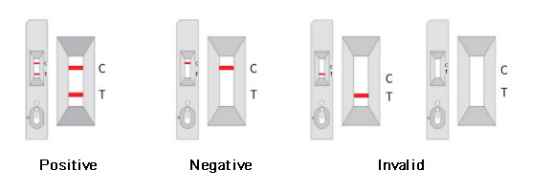
Q: What is the optimal sample concentration for the Flag-tag Protein Rapid Detection Kit?
A: ≥1 µg/mL.
Q: Do I need controls when using the Flag-tag Protein Rapid Detection Kit?
A: Yes, negative and positive controls must be set up for accurate results. It is recommended that the control samples and the test samples be of the same matrix.
Q: Why does the color intensity of the test line (T) vary after testing different samples?
A: When the sample contains no Flag-tagged protein, the test line (T) shows the darkest color. As the Flag-tagged protein content increases, the color intensity of the test line (T) gradually weakens until it disappears.
Q: Can the Flag-tag Protein Rapid Detection Kit be used for quantitative detection?
A: No. This kit provides qualitative detection of Flag-tagged protein. For quantification, use a relevant quantitative assay kit.
Product Description
The His-tag consists of six histidines (His-His-His-His-His-His), typically attached to a protein's N- or C-terminus, facilitating recombinant protein purification. Due to its small molecular weight, it generally does not affect the protein's structure or bioactivity, making it one of the most widely used purification tags.
Detai Bio offers a Rapid His tag protein detection kit, utilizing lateral flow immunoassay technology for qualitative detection in cell culture supernatants, cell/bacterial lysates, or purified His-tag proteins. Simply add the sample to the test strip and read results within 10 minutes.
Product Advantages
- Speed: Results in 10 minutes
- Accuracy: Comparable to other antibody immunoassays
- Ease of Use: No dilution needed for supernatants and lysates, no additional equipment required
- Reproducibility: Consistent color and results across batches
Application Scenarios
- Verify His-tagged protein expression
- Optimize protein induction time during expression
- Check elution fractions during protein purification
Product Overview
| Product Name | His tag protein detection kit |
| Purpose | Qualitative detection of His-tagged proteins in various samples |
| Technology | Lateral flow immunoassay |
| Storage | 4-30°C, avoid direct sunlight, do not freeze |
| Validity | 12 months |
Product Contents (10 tests)
| Rapid His-tag Protein Test Strips | 10 tests |
| Sample Dilution Buffer | 10 mL |
Instructions for Use
1. Sample Requirements
①Applicable for cell culture supernatant, cell/bacterial lysates, or purified protein products. If cloudy, centrifuge and use the supernatant.
②No dilution needed for supernatants or lysates; purified samples can be diluted if needed.
③Samples must be at room temperature before testing.
2. Test Method
①Allow the test strip to reach room temperature.
②Insert the strip into the sample or add 75 μL sample to the strip’s sample pad, avoiding bubbles. Read results after 10 minutes.
3.Results Interpretation
①Negative: Red bands appear on control (C) and test (T) lines.
②Positive: Red band on C line only, no band on T line.
③Invalid: No red band on C line.

Q: What is the optimal sample concentration for the His-tag Protein Rapid Detection Kit?
A: ≥2 µg/mL.
Q: Do I need controls when using the His-tag Protein Rapid Detection Kit?
A: Yes, negative and positive controls must be set up for accurate results. It is recommended that the control samples and the test samples be of the same matrix.
Q: Why does the color intensity of the test line (T) vary after testing different samples?
A: When the sample contains no His-tagged protein, the test line (T) shows the darkest color. As the His-tagged protein content increases, the color intensity of the test line (T) gradually weakens until it disappears.
Q: Can the His-tag Protein Rapid Detection Kit be used for quantitative detection?
A: No. This kit provides qualitative detection of His-tagged protein. For quantification, use relevant specialized instruments.


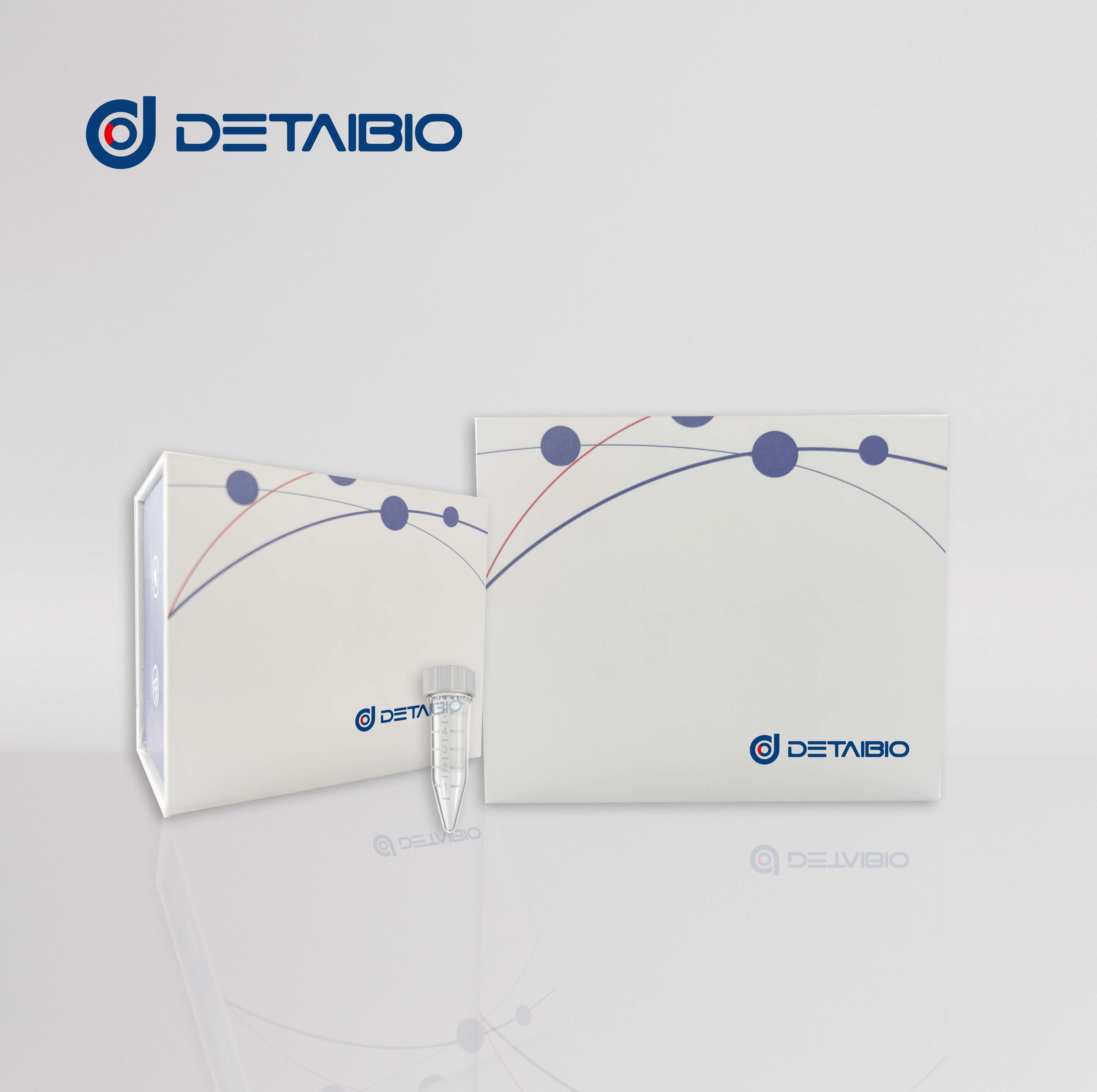
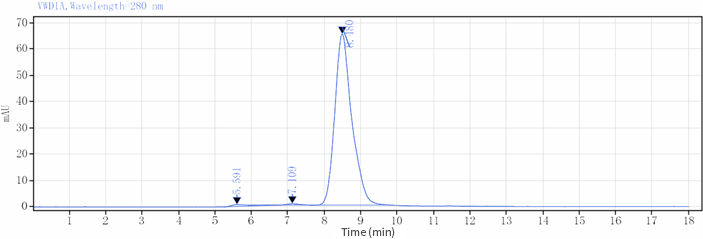
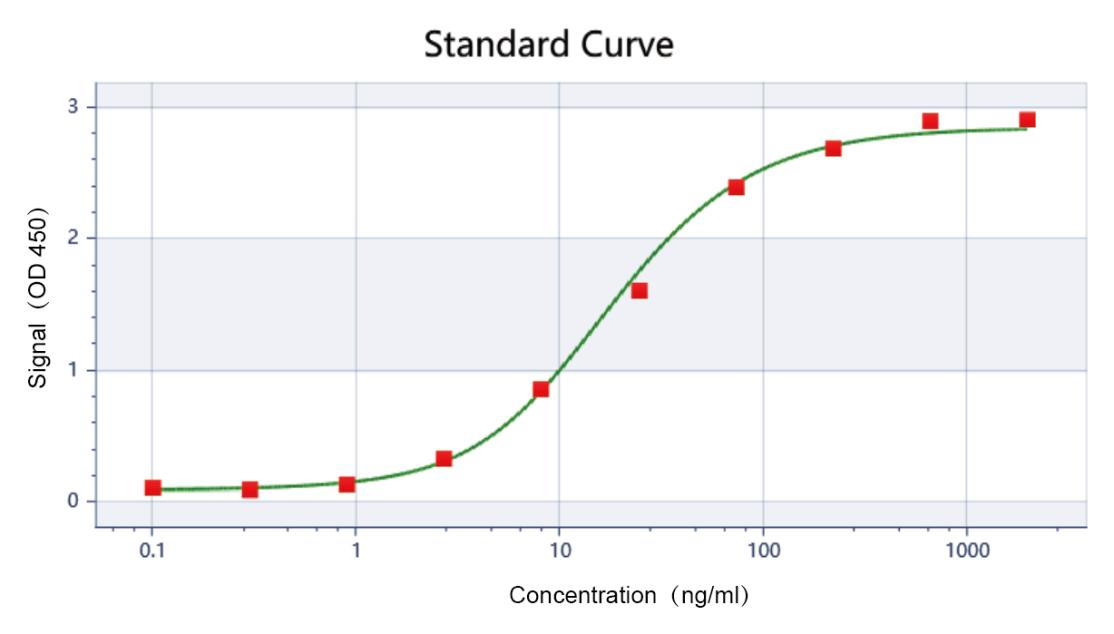 EC50=4.599 ng/mL
EC50=4.599 ng/mL 